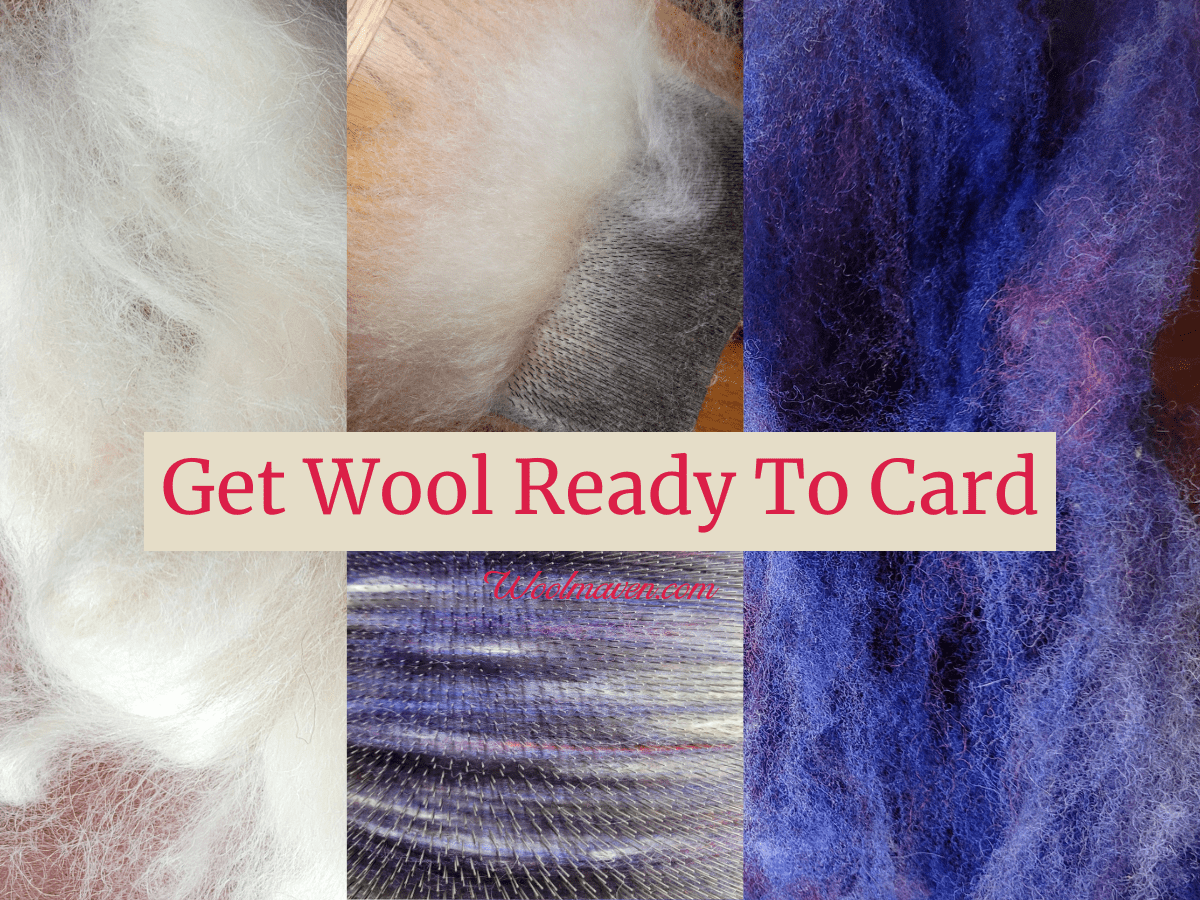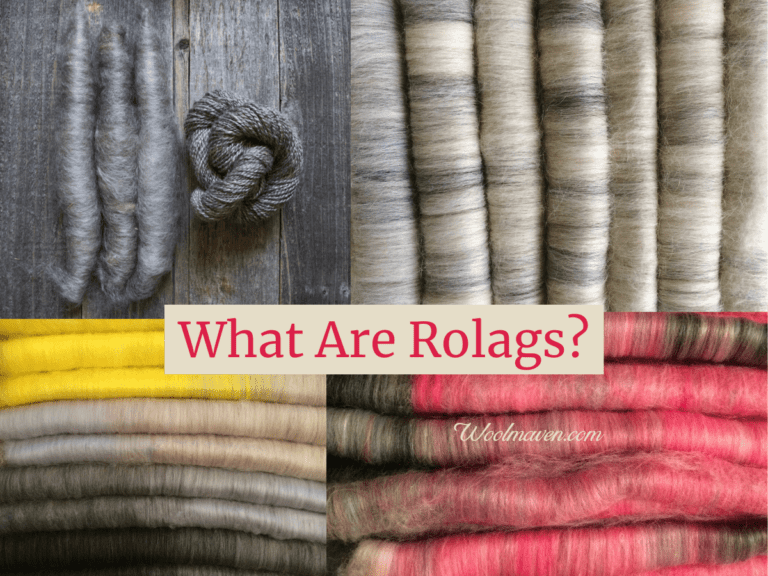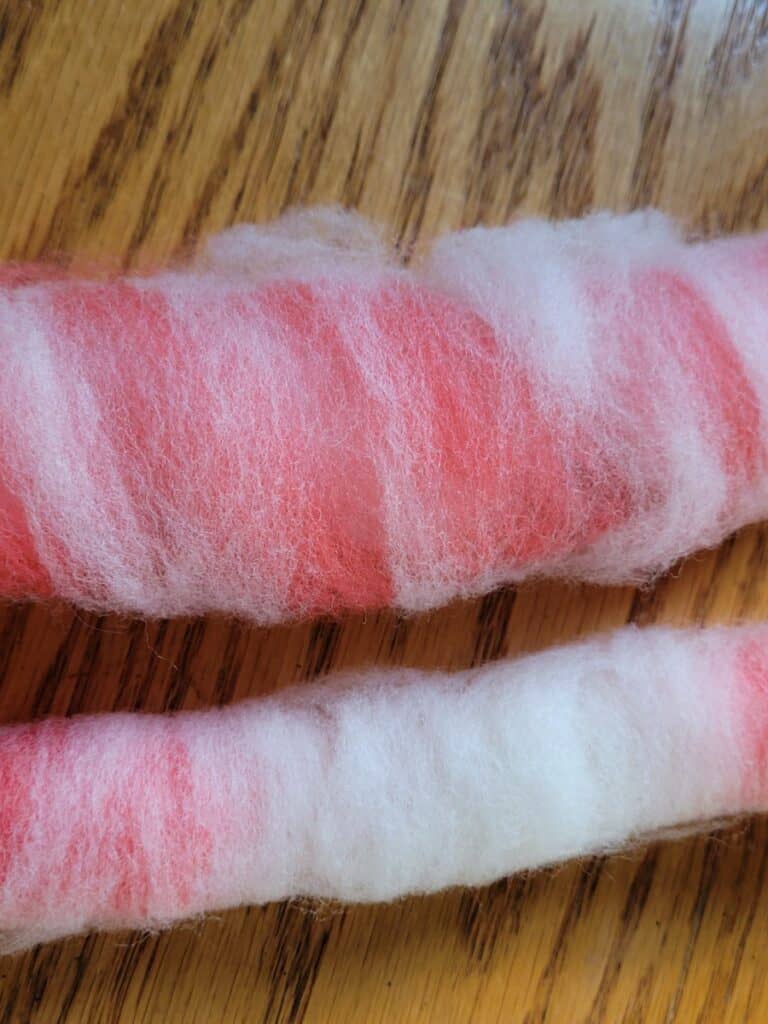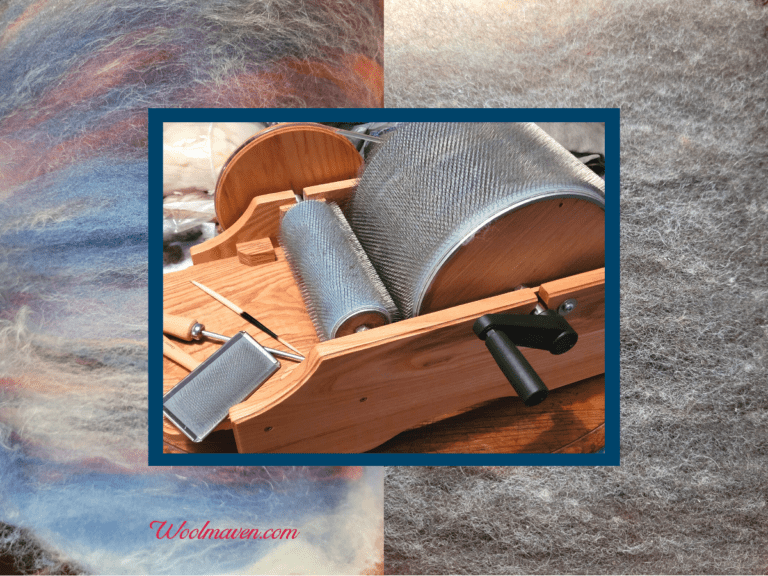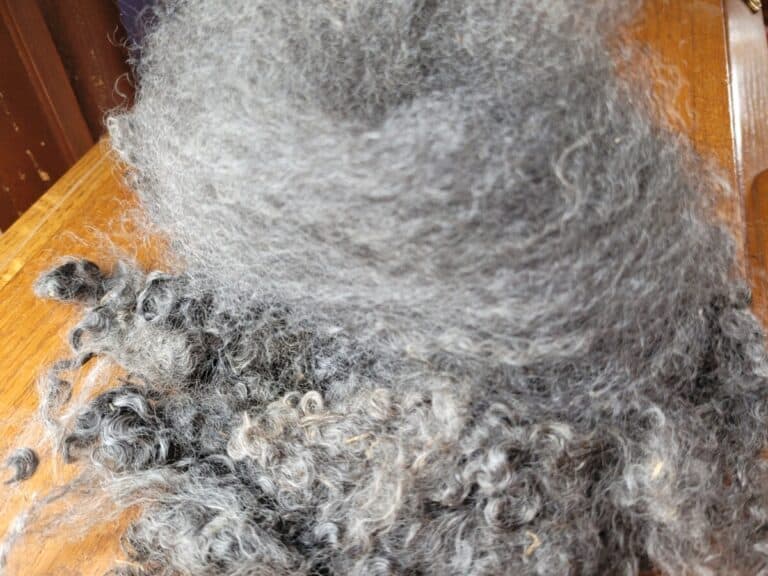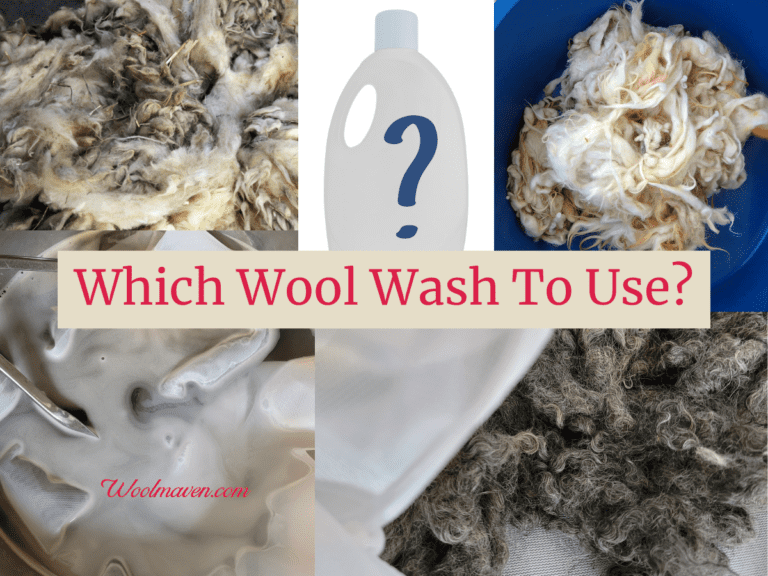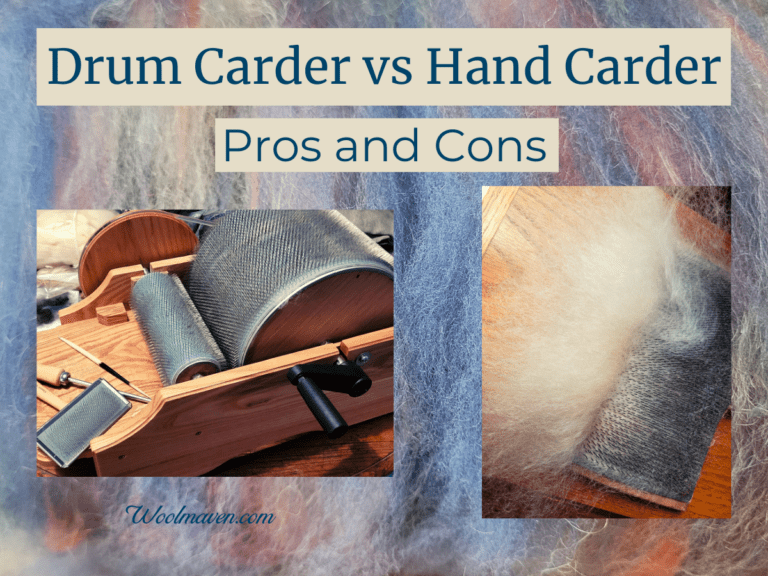6 Tips To Prepare Your Wool For Carding (Flick, hand or drum carders)
Doing your own wool preparation is a big step toward expanding into all sorts of specialty or one of a kind fleeces that will be wonderfully interesting to spin!
How do you get that new to you wool ready to card? We’ll go over the things you need to know before and during carding to set yourself up right and get the carding results you want.
Wash wool before carding it
The first thing you’ll want to do in nearly all cases is to wash the wool before you card it, higher grease wools especially. How To Wash Raw Wool will help you with the washing process.
The reason for washing the wool is you’ll remove the lanolin and other dirt and debris from the fibers, leaving you with clean wool to card.
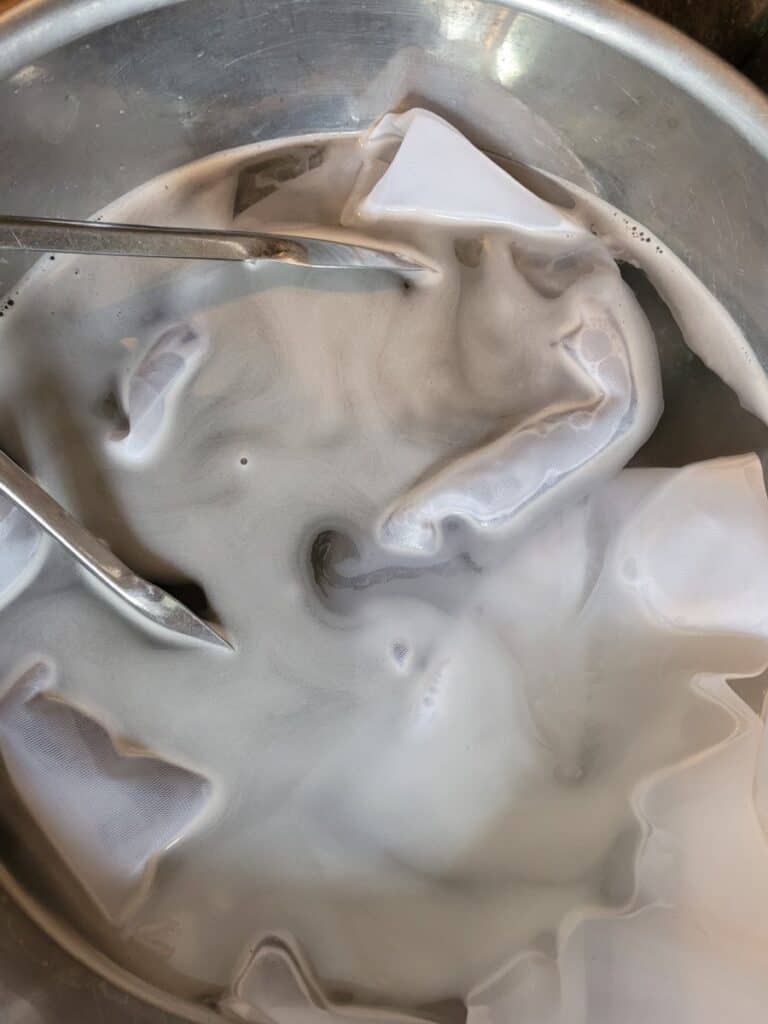
If you do not want to wash out all of the lanolin, you can do a suint soak, which will only remove the dirt, but leave the lanolin intact. This works well for low grease fleeces that are fairly clean.
A very few fleeces will be able to be worked with unwashed. Since you are doing the project, you get to decide if the wool you are working with needs washed or can be used raw.
If you think you have a fleece that will work for you “in the grease”, give spinning or carding a try and see how it goes. I prefer to spin in the grease, but it only works for some wool!
Separate out sections of fleece
If you are working with an entire fleece, or even a half fleece, there will be parts of the fleece that you’ll want to keep separate, specifically any part that feels or looks different than the rest.
This would be second cuts, any fibers that are coarser than the rest of the wool (the breech or back of the thigh area), different staple lengths or any stained sections.
Some breeds or individuals will have a very uniform fleece that doesn’t need any separation, other fleeces have quite a variety!
It’s best to check over your fleece anyway, just to know what you are working with, and, if needed, separate out sections now while it’s easy.
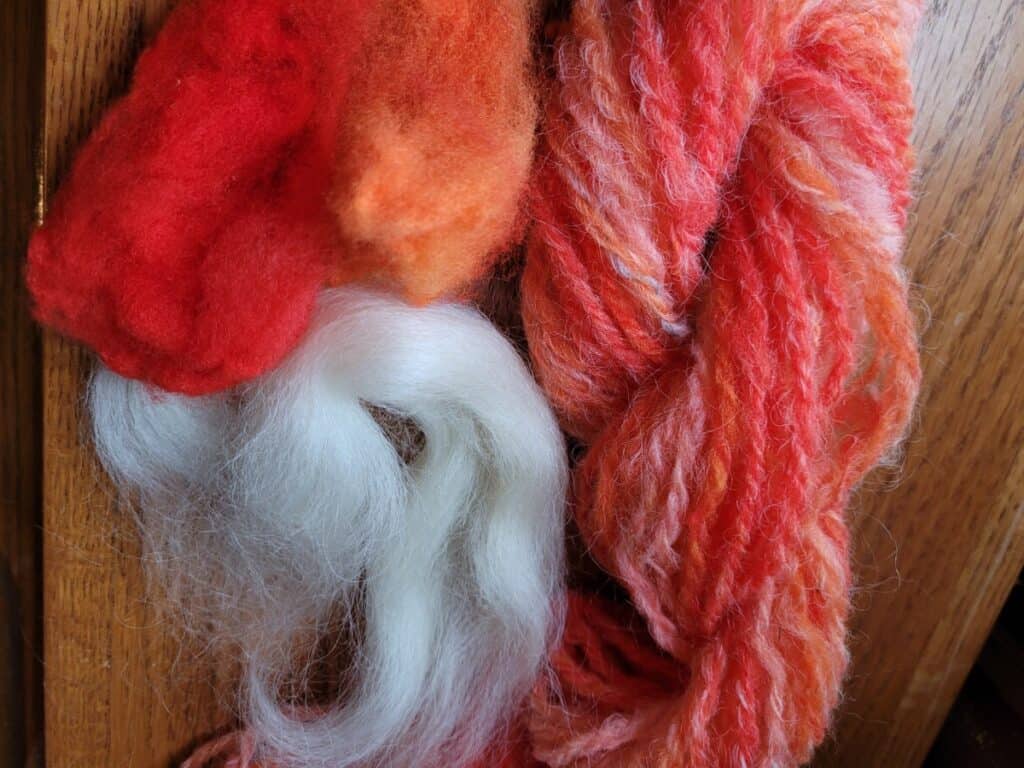
Think about the end project before carding
Think about the end project before you begin your carding.
This is all you, your yarn can be just about anything you want it to be. To get what you want, you’ll have to think about the things you need in your end result before you begin work.
Here are a few ideas to get you thinking:
- What are you hoping to do with this yarn?
- Are you wanting a smooth yarn or more loft?
- Do you plan to blend colors?
- Will this be a striped yarn?
Consider an initial carding for fleece you have washed
I find that when I am starting with a fleece that I washed I put small sections of fleece onto the carder, normally the drum carder, by itself, just to get the initial carding done.
After the first carding, the wool will be opened up and ready to be blended with other wools or put through the carder again.
If I try to do the first carding at the same time as adding in more fiber, even different colors of the same wool, I end up with far too many nepps and usually VM (vegetable matter) in the batt.
A preliminary carding to get things started gets rid of quite a few of the imperfections that will stay in the fiber if I skip this step.
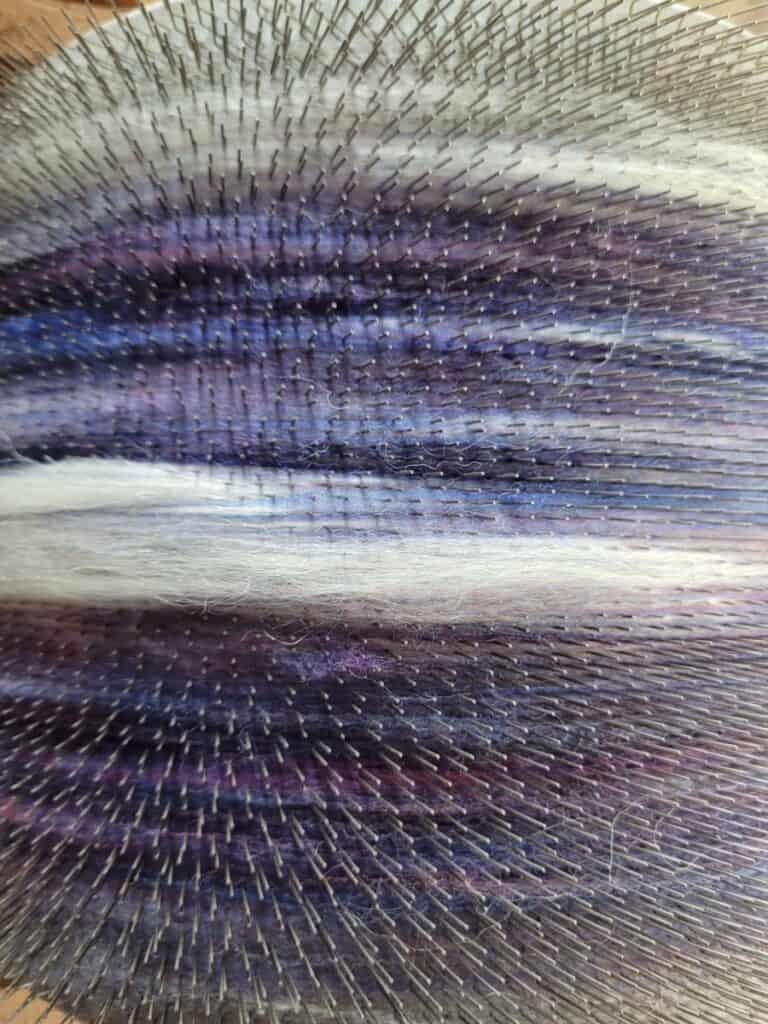
Card small amounts of fiber at a time
It is important to remember to card small amounts of fiber at a time. Carding is about quality, not quantity. You want well carded wool, not a big pile of a hard to spin mess.
This goes for drum carders as well as hand carders. All carding is done with small amounts of wool at a time.
This is a hard one for me, I tend to put a bunch of wool on the card to “get more done”. Too bad that doesn’t actually work so well and I end up re carding, so it’s not fast either!
By overloading the card, whichever card you are using, you end up making the carding less effective.
The teeth on the card have room to work through the fibers and the more fibers the less able they will be to dig deep and really separate out each individual fiber from the next.
Sadly, I know this from experience. Overloading the card will get the surface of the wool carded but not down in the card carded, so I have to work with the mess that I created or re card.
Go slowly with your carding and be thorough the first time so you’ll have wonderful wool to spin.
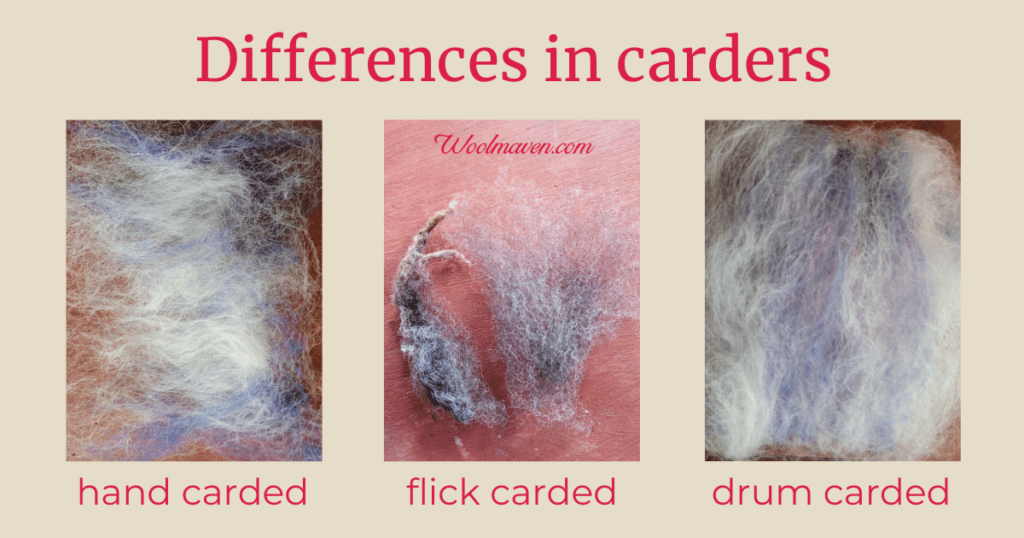
This post contains affiliate links, which means I receive commissions if you choose to purchase through links I provide (at no extra cost to you).
Understand purpose of each carder
While you can, of course, card wool with each carder, the results you get will be different depending upon which carder you use.
Hand cards can be more thorough
From what I have seen, hand carders are more thorough with carding than drum or flick cards.
The hand cards that I use are Clemes & Clemes Curved Back Wool Cards. I’ve had them for almost 20 years and use them for all of my hand carding.
Hand cards seem to be the preparation of choice for fine wools and to get all imperfections out of the fiber.
Why? You just have so much more control with hand carders and can really spend time separating out fibers and getting your wool perfect.
Hand carders are also best to use when you want a smaller batt for a small project or to test a fiber or color mix to see how you like it.
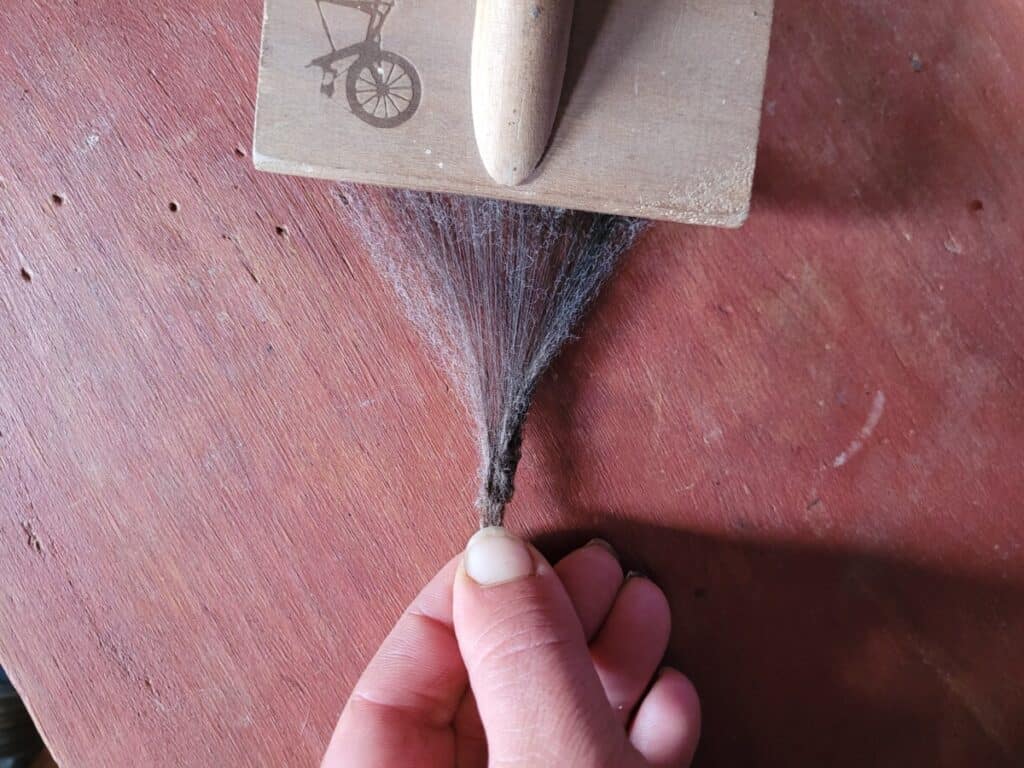
If I don’t flick card first, the felted tip stays in the batt, especially on the drum carder, making the wool harder to spin.
Flick cards keep lock structure
Flick cards are the least disruptive of the lock structure, so would be the choice for any wool that you want to spin with as little preparation as you can.
I find that flick cards also give a smoother yarn since the loft of the fibers from carding the least of the three carders, making it more like a combed preparation and less like a carded one.
Drum carders are for volume carding
Drum carders are used for carding volume. I love my drum carder and use it all of the time, but I am aware of it’s strengths and weaknesses, it’s not perfect for every situation.
A drum carder is great for carding washed wool.
I use mine for two run throughs of recently washed wool, once to just open it up and drop out the VM and the second time to do a more thorough job with the actual carding.
If you do much carding at all, consider purchasing the Ashford Drum Carder. Drum carders are truly wonderful tools, I love mine!
A drum carder can be used to blend wools or as an initial carding that you would then re card using hand carders or put on a set of combs or a hackle.
I find that a drum carder is the least likely of the three to get out any nepps, they usually just end up in the batt.
If I run the batt through again, it will further smooth out the fibers, but the nepps will remain unless I pick them out or pull them out during spinning.
If you want a perfectly smooth fiber preparation, you’ll need to experiment a bit and maybe card using the drum carder as the first shot then move to hand carders to really get things perfect.
Why I Love My Handcards is a fun article by Kate Larson on SpinOff magazine, showing the three ways she uses her handcards depending upon what results she wants in the wool.

